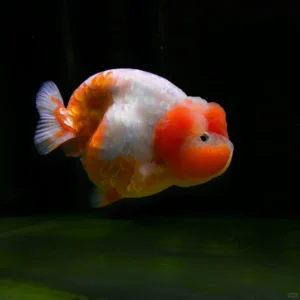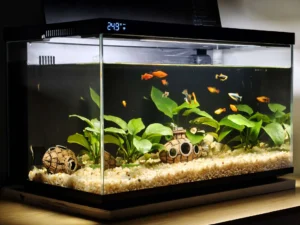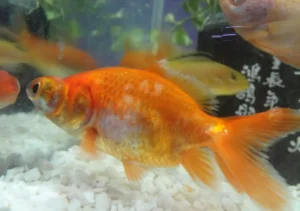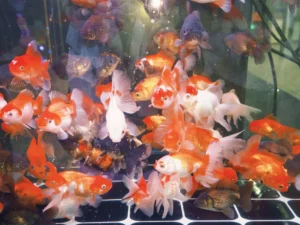For many aquarium enthusiasts, fishkeeping is not only about caring for the fish but also about battling algae. Whether algae growth in your fish tank is good or bad depends on the situation. Some aquarists welcome algae, while others can’t stand the sight of it. The difference lies in the type of algae, its impact, and the mindset of the fishkeeper.
Before we dive into solutions, let’s take a look at several common types of algae that often appear in fish tanks.

1. Brown Diatoms (Silica Algae)
Brown diatoms are one of the most primitive types of algae with incredible resilience. They usually appear at the bottom of the aquarium, especially when lighting is poor. These algae are brownish in color and, under a microscope, appear as oval-shaped single cells.
Although diatoms are not harmful and can even serve as food for hungry fish, they form a muddy layer at the bottom of the tank, which affects the overall appearance.
How to remove brown diatoms:
The best time to clean them is during the early stage of growth—they can be easily wiped off. You can also introduce algae-eating fish or shrimp to help control them.
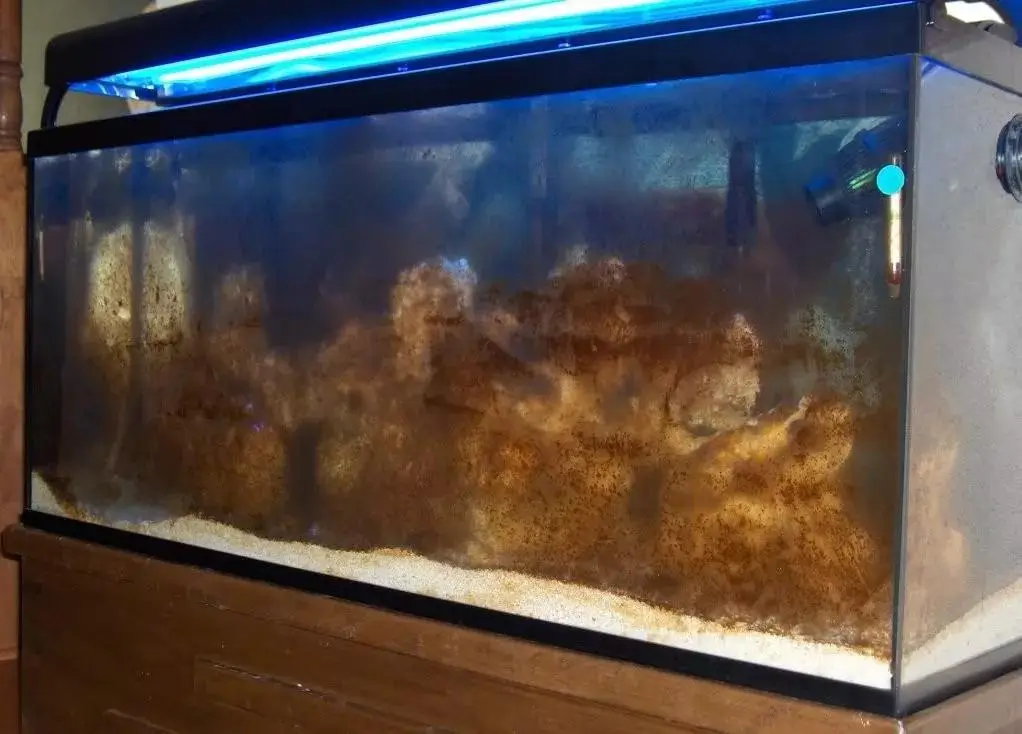
2. Green Algae
Green algae are the most common type of algae found in aquariums. They grow fast, attach firmly to surfaces, and are difficult to remove. In well-lit environments, they start as a thin, light-green film that fish may nibble on. Over time, the color darkens and thickens into a tough, dark green layer that becomes hard to clean and inedible for fish. When these algae decay, they can negatively affect water quality.
How to remove green algae:
It’s best to clean them while they’re still in the early growth stage. Once they harden into a crust, you’ll need to use a steel wool pad or a stiff brush. For corners or tight spots, manual scraping is often the only solution.

3. Spot Algae and Black Beard Algae
These two algae types often appear together. Spot algae begin as dark green filaments and may eventually turn black—sometimes due to the presence of black beard algae. Black beard algae are extremely resilient and are among the most troublesome algae in any fish tank. They look like fine black threads up close or like mold from afar. They grow quickly, are difficult to control, and fish rarely eat them.
How to remove black beard algae:
- Manual removal: Start by physically cleaning the algae, increasing water changes, and using a UV sterilizer.
- Biological control: Add algae-eating species such as zebra snails, apple snails, or Amano shrimp.
- Chemical treatment: Use products containing glutaraldehyde or mild acids like white vinegar carefully.
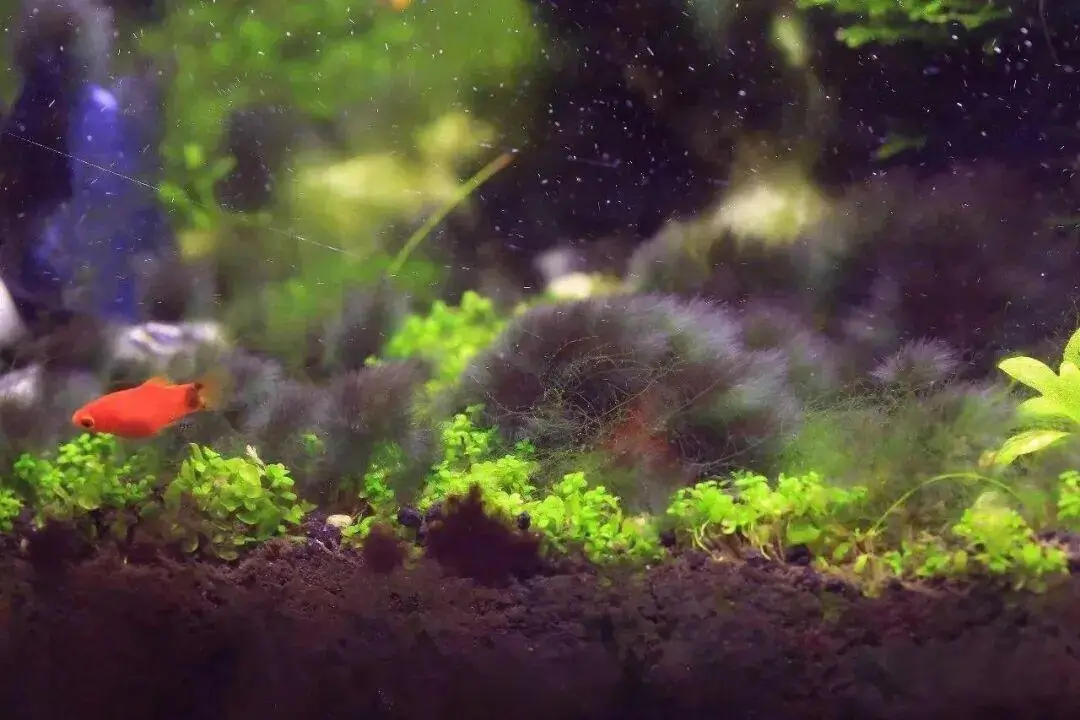
4. Hair Algae
Hair algae form thin, floating green filaments that can cover the water surface. While a single strand is almost invisible, large patches are quite noticeable and can make the tank look messy. Although they are not highly harmful, they greatly reduce the tank’s aesthetic appeal.
How to remove hair algae:
- Manual removal: Skim and pull them out regularly, though complete removal can be challenging due to their adhesive nature.
- Reduce debris: Keep the tank clean to reduce attachment surfaces.
- Add algae eaters: Introduce fish, shrimp, or snails that feed on algae.
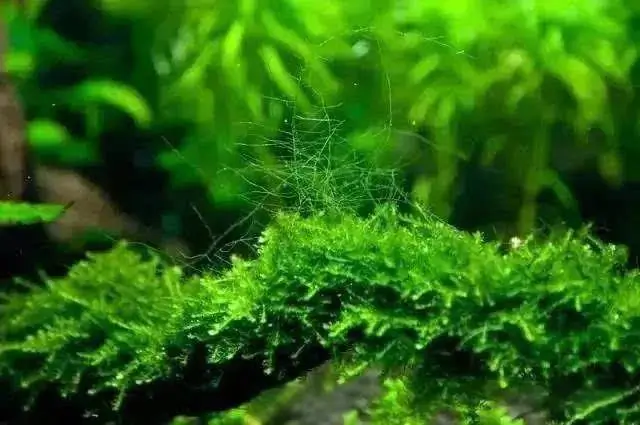
5. Green Water
Green water is another common aquarium issue that can suddenly appear and take aquarists by surprise. It’s not as harmful as it looks—in fact, it can purify water by absorbing toxins. However, the cloudy green color ruins the beauty of the aquarium.
Green water is caused by a bloom of single-celled algae such as Chlorella or Chlamydomonas. These microscopic plants multiply rapidly under bright light and nutrient-rich conditions. Although each cell is only 3–8 µm in diameter, their collective growth can drastically change the water’s appearance.
How to clear green water:
- Strengthen mechanical filtration, clean filter media regularly, and perform scheduled water changes. Reduce ammonia and nitrate levels by removing waste and leftover food.
- Limit light exposure—avoid excessive lighting time.
- Use a UV sterilizer or algae control solution.
- Introduce daphnia (water fleas) to feed on microalgae—though this method is less practical for most setups.
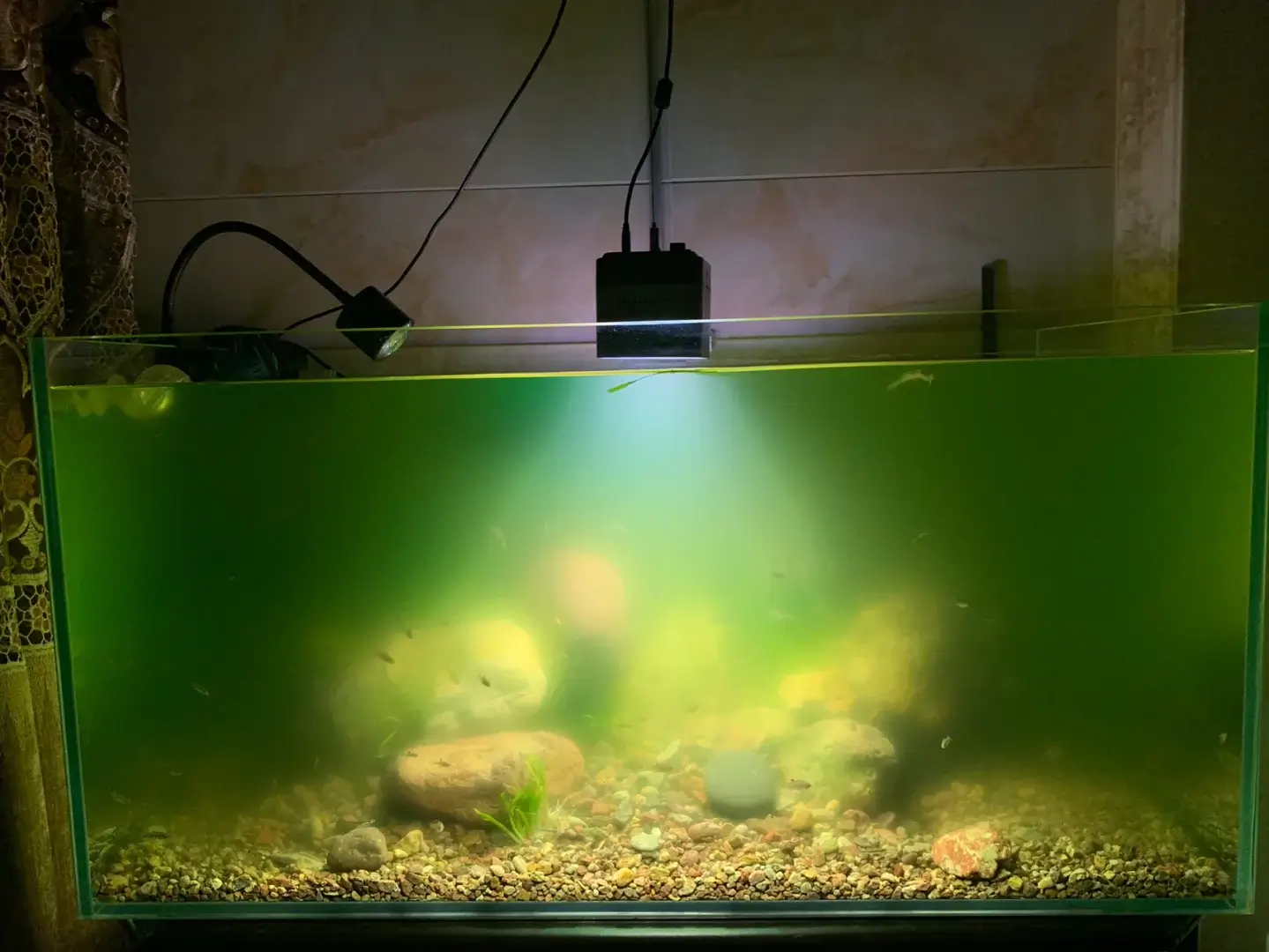
Final Thoughts
An algae bloom in your fish tank isn’t always a bad thing. In nature, fish live alongside algae every day. What matters most is understanding why algae appear and maintaining balanced water quality. Instead of panicking when algae grow, take it as a sign to adjust your tank’s ecosystem.
Stay tuned for more aquarium tips and insights in our next post as we continue exploring the fascinating world of fishkeeping!

